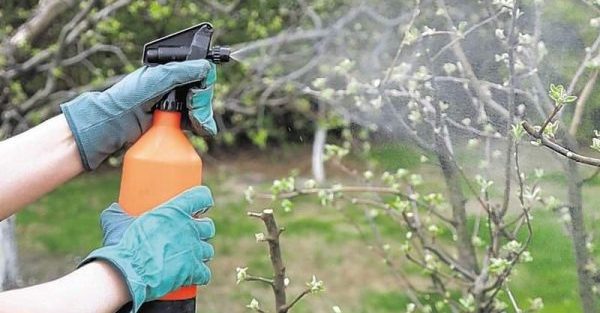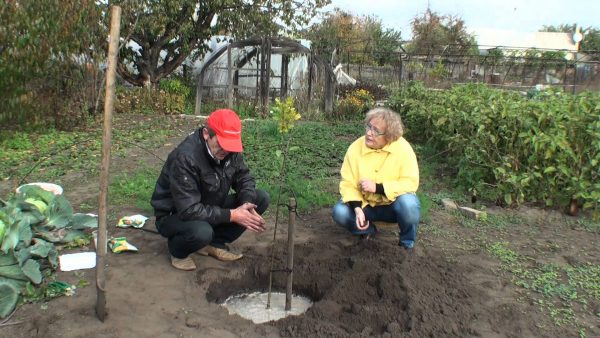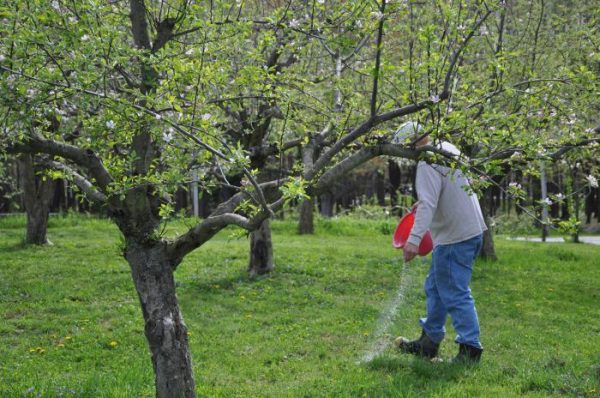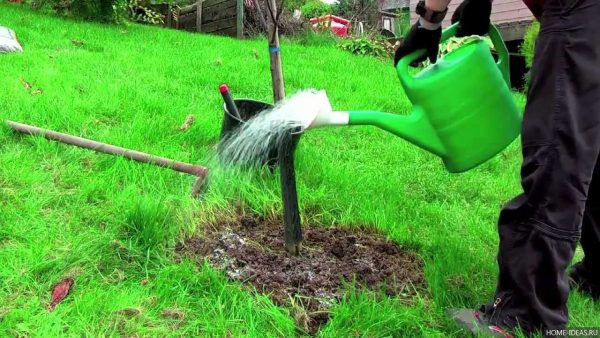How to fertilize trees and how to choose fertilizer
Content
When feeding is required
Fertilization in the garden should be depending on the type of soil and varieties of trees and shrubs. However, several general principles can be distinguished. The most important thing for trees in spring is vigorous growth, which can be provided by fertilizers with a high nitrogen content, such as manure. However, in no case should you use fresh. Overripe manure or compost should be brought into the trunks for digging.
Other sources of nitrogen can be mineral fertilizers - ammonium nitrate or urea. Three to four weeks after nitrogen fertilization, mineral fertilizers with a high potassium content can be applied to the soil. It should be borne in mind that the introduction of additional nutrients into the soil is not so important for young trees and shrubs as for fruit-bearing ones. Although both will be grateful for additional food after a particularly cold winter.
Feeding methods
Top dressing of trees can be done in different ways: you can fertilize the soil, providing root nutrition, or you can apply micronutrient fertilizers through the crown. The second method is often combined with pest control. The first use of fertilizers occurs when the garden is laid. Humus (or compost, or rotted manure), superphosphate, ash, and mineral compounds are introduced into the seedling pit. In the first year after such feeding, you can not apply additional fertilizers.
In the second year of growth, as well as before the beginning of fruiting, you can feed the tree with manure. The settled manure dissolved in water is one of the best fertilizers for an orchard. Usually, it is not recommended to use fresh manure for fertilizing - it is preferable to scatter it in the garden in the fall for digging, and then in winter it has enough time to decompose so that its nutrients pass into the soil in a form that is convenient for plants to assimilate. However, fresh manure can also be used for liquid top dressing. To do this, it is dissolved in water, in a ratio of one to five, and left for a week under a tight lid. This fertilizer should be applied after watering the trees. This feeding can be repeated in the summer, but no later than in the second half of July.
Video "Review of the most popular tree food"
Video review of the most popular fertilizing for fruit trees, as well as useful tips for their use.
Through the roots
This is the traditional way to apply any fertilizer, both mineral and organic (manure, peat, compost). This method is based on the natural life cycle of any plant. The basic rule of root dressing of the garden is that in rainy weather, fertilizers are used dry, and in a dry tree, you first need to water it well and only then feed it.
Under the apple trees in the spring, you can apply cow dung (about 4 kg per tree), or bird droppings diluted in a ratio of 1 to 15. Having opted for mineral fertilizers, you can compensate for the lack of nitrogen in the soil with the help of ammonium nitrate - 30 grams per square meter.A little later, apple trees will need potassium, which can be obtained from potassium sulfate - 10-20 grams per square meter.
For pear growth, it is good to apply organic fertilizers every two to three years, depending on the condition of the soil. The pear menu in the spring is similar to the apple menu - 4 kilograms of rotted manure or compost and one hundred grams of superphosphate must be embedded in the soil. Stone fruits (cherries, plums) should be properly fed with organic fertilizers every two to three years, with an autumn digging. In the spring, a nutrient solution with nitrogen-containing compounds can be prepared for them.
Through the crown
This method of fertilizing can be compared to an ambulance. Foliar dressing can be relevant if you urgently need to replenish the lack of nutrients. Foliar dressing should be carried out after the end of flowering. They can be repeated several times - a week after the end of flowering, a month after the first time, and in summer, but no later than three weeks before harvesting - so all the nutrients will be assimilated, but will not be in excess.
It is necessary to apply fertilizer for foliar feeding in dry, but cloudy and cool weather, it is correct to do it in the morning or evening hours, thus you can guarantee the absence of burns on the leaves. For apple trees, you can use a urea solution (2 tablespoons per 10 liters of water) - spray both on the leaves and on the branches and trunk. You can also spray the trees with an ash solution, which is a good source of calcium, phosphorus and potassium. To prepare top dressing, you need to insist a glass of ash in 2 liters of hot water, then dilute the resulting suspension in 10 liters of water. You can use liquid manure for foliar feeding - dilute half a liter in a bucket of water, then strain.
The pear is a more delicate tree than the apple tree. It can also be fed with urea, but it will be correct to reduce the concentration - 1 tablespoon per 10 liters of water. Kostochkovs need a little more nitrogen fertilizers for optimal growth. Therefore, the concentration of urea for foliar feeding should be higher - 3-3.5 tablespoons per ten liters of water. Also, for the growth of any fruit trees and berry bushes, micronutrient feeding is necessary. To do this, you can use a solution of complex mineral fertilizers.
How to understand that a plant is missing something
If the tree does not grow well, is covered with small leaves, the fruits do not set or ripen, then it is time to apply fertilizers. By the appearance of plants, it is sometimes possible to determine which elements in the diet are lacking.
Pale green, yellowish or white leaves give off nitrogen deficiency, especially on sandy soils. If the plant does not grow well at the same time, flowering is delayed - it is necessary to add manure or compost. With a lack of phosphorus, the leaves can take on a dark green, bluish or purple hue. After detecting such a problem, it is necessary to apply superphosphate, nitroammophos or phosphate rock. When the plant lacks potassium, the leaves wrinkle, curl, flowers crumble, even from young trees. This problem can be solved by using potassium chloride, potassium sulfate or potassium nitrate. Well-nourished trees will create a well-kept garden that will delight both winter and summer.
Video "How to feed trees in the spring season"
Demonstration video on how to feed trees in spring.





